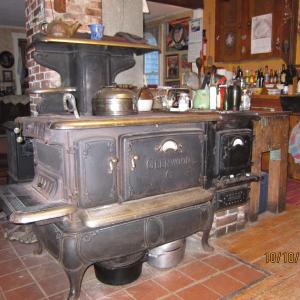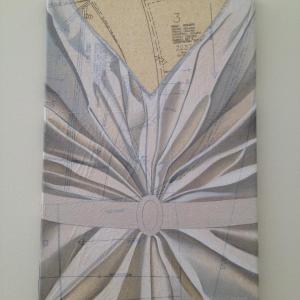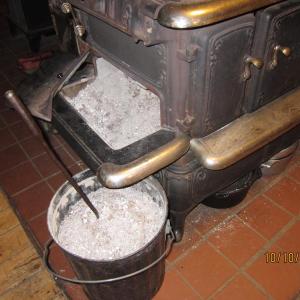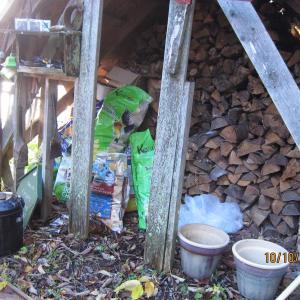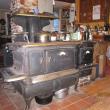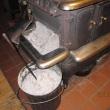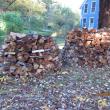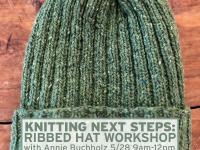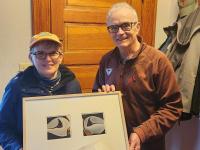This Week in Lincolnville: The Heart of the House
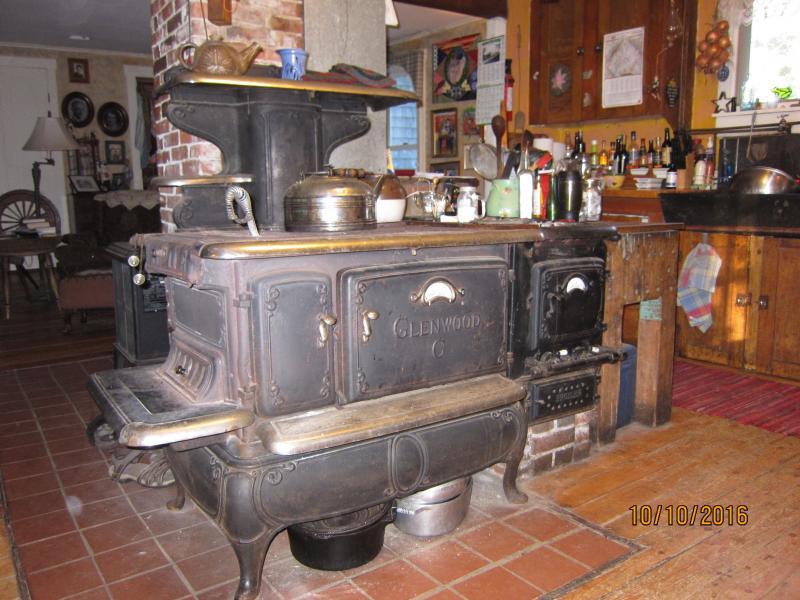 Our Glenwood stove, with propane “sidecar”, has the place of honor in our kitchen.
Photo by Diane O’Brien
Our Glenwood stove, with propane “sidecar”, has the place of honor in our kitchen.
Photo by Diane O’Brien
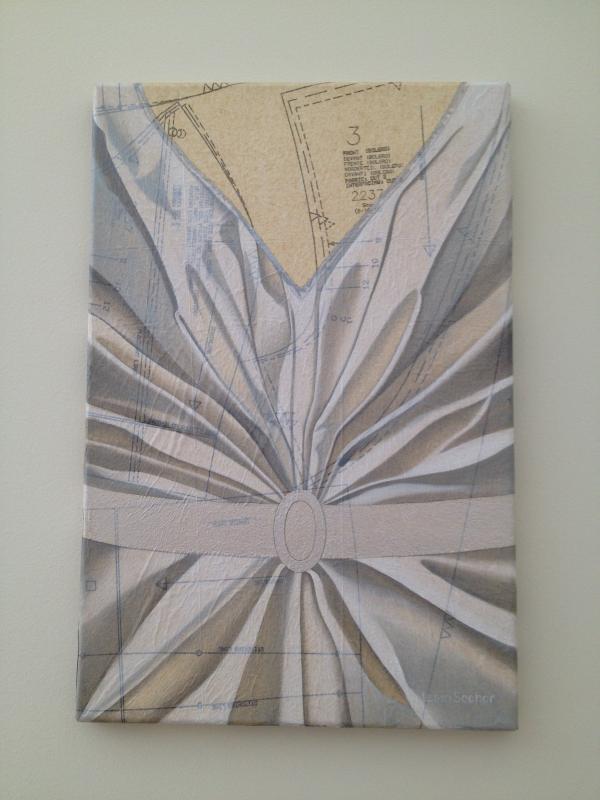 This Leisa Sochor painting was a gift to the Library from the Alex Katz Foundation.
Photo by Sheila Polson
This Leisa Sochor painting was a gift to the Library from the Alex Katz Foundation.
Photo by Sheila Polson
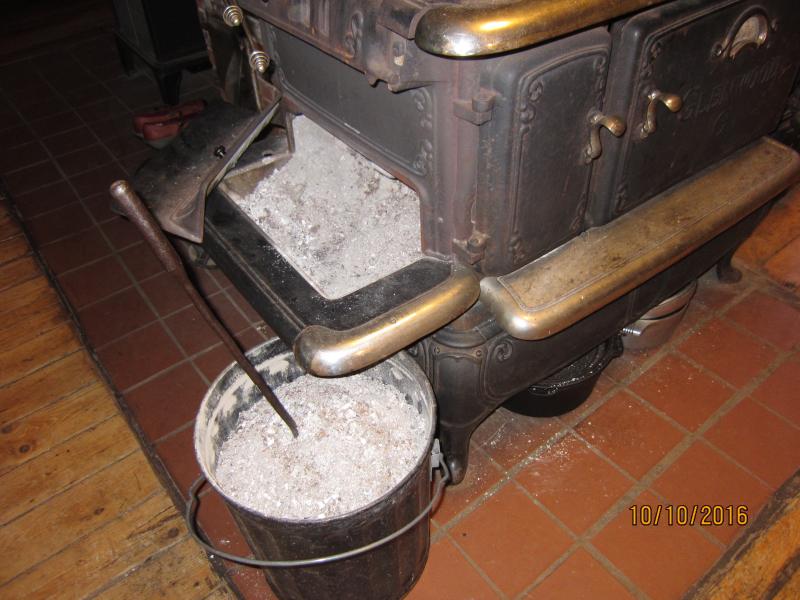 Cleaning out the ashes is a daily chore.
Photo by Diane O’Brien
Cleaning out the ashes is a daily chore.
Photo by Diane O’Brien
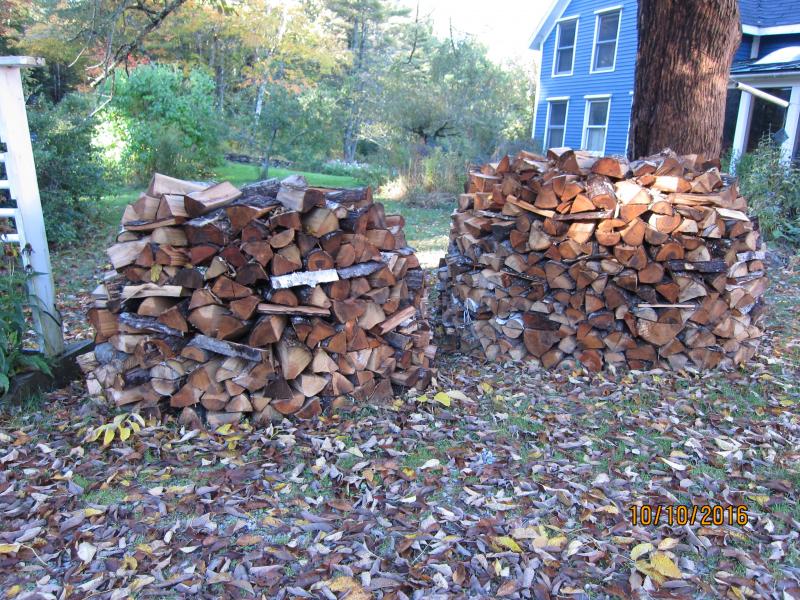 Two of this year’s round woodpiles.
Photo by Diane O’Brien
Two of this year’s round woodpiles.
Photo by Diane O’Brien
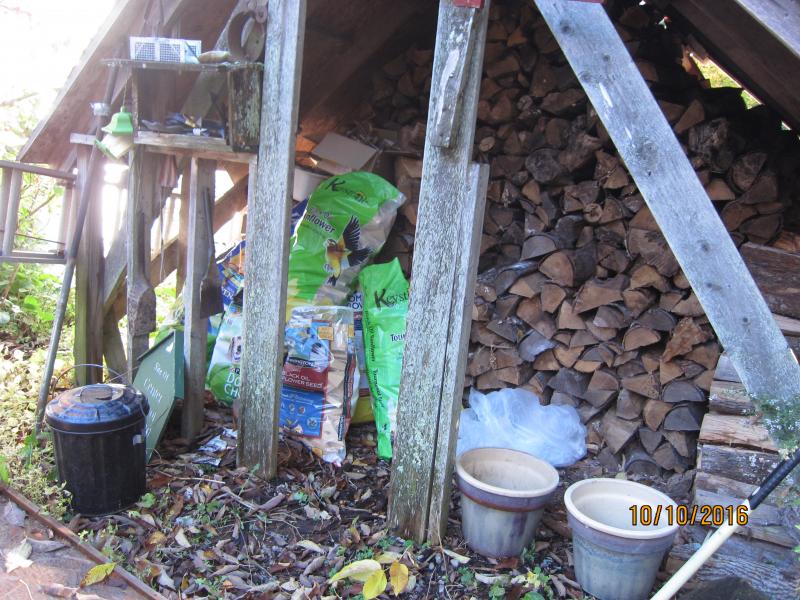 Bags of kindling, from Twin Brooks Stretcher, and this year’s dry firewood.
Photo by Diane O’Brien
Bags of kindling, from Twin Brooks Stretcher, and this year’s dry firewood.
Photo by Diane O’Brien
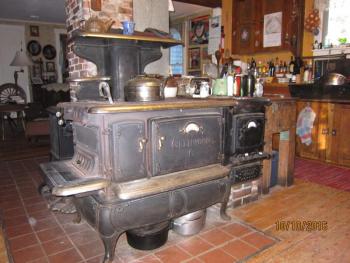 Our Glenwood stove, with propane “sidecar”, has the place of honor in our kitchen.
Photo by Diane O’Brien
Our Glenwood stove, with propane “sidecar”, has the place of honor in our kitchen.
Photo by Diane O’Brien
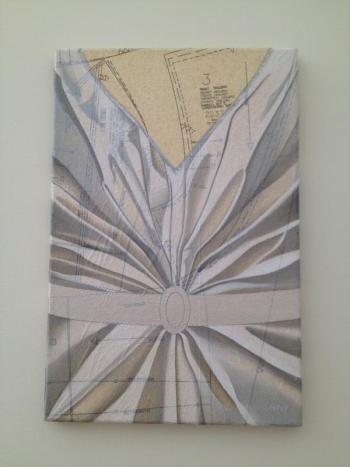 This Leisa Sochor painting was a gift to the Library from the Alex Katz Foundation.
Photo by Sheila Polson
This Leisa Sochor painting was a gift to the Library from the Alex Katz Foundation.
Photo by Sheila Polson
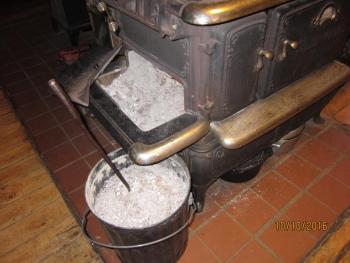 Cleaning out the ashes is a daily chore.
Photo by Diane O’Brien
Cleaning out the ashes is a daily chore.
Photo by Diane O’Brien
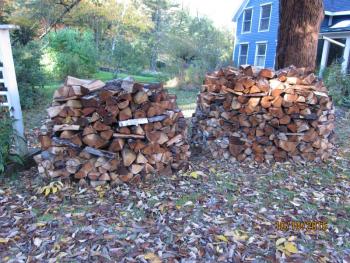 Two of this year’s round woodpiles.
Photo by Diane O’Brien
Two of this year’s round woodpiles.
Photo by Diane O’Brien
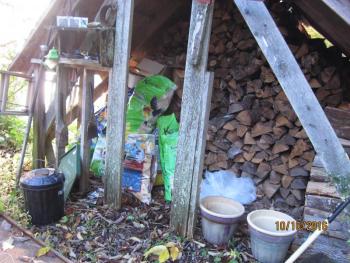 Bags of kindling, from Twin Brooks Stretcher, and this year’s dry firewood.
Photo by Diane O’Brien
Bags of kindling, from Twin Brooks Stretcher, and this year’s dry firewood.
Photo by Diane O’Brien
“Your stove is the one thing I’d take back to Taiwan, if I could.” That was our son’s mother-in-law talking the other evening, as she admired our old Glenwood cookstove, checking out all the little doors and shelves and cast-iron accouterments. Funny, because it’s also the one thing I treasure most in our house. It came to us the summer we moved here, 1970. We saw an ad, probably in the Republican Journal, for a cook stove for sale in Belfast, and for $50 brought it home. A box of wood grates was included, along with the original bill of sale dated 1918, making the stove almost 100 years old.
The grates had never been installed, rather, two oil burners filled the firebox. I haven’t seen those used anywhere in years, though undoubtedly some people still have them. They burn kerosene, and the typical set-up was to have a tank outside with a fuel line leading to the burners in the stove. My first Maine house, in St. George, had a regular-looking gas stove in the kitchen with two oil burners at one end and two gas-burning rings at the other, a strange hybrid. I never did learn how to light those oil burners and had to ask for help every fall when it was time to heat up the house.
That first summer in Lincolnville we took out the burners, installed the wood grates and hooked the stove up to the kitchen chimney. And thus began our lives in a house mainly heated with wood. During the heating season I also do most of the cooking on the Glenwood. At some point we found a Glenwood “sidecar”, a small propane stove that actually is made to hang off the side of the woodstove. It has three burners, an oven and even a small broiler. For many years it was the only oven I had for summer cooking, when you can’t bear to build a fire in the kitchen. Then at some point we got an electric oven, and it felt like moving into the 20th century. Note, that’s not the 21st Century.
Heating with wood gives the day a certain structure, especially when the wood-burning appliance is a clunky old cookstove. They hadn’t invented air-tight stoves in 1918; the Glenwood is actually quite airy, which means you can get a good hot fire going in no time, hot enough to bake biscuits or bring to a boil a canner full of tomatoes. But it’s a fire you have to keep feeding; ignore it for an hour and your hot fire will have burned out completely, and you’re starting over.
CALENDAR
TUESDAY, Oct. 11Needlework Group, 4 – 5:45 p.m., Library
Special Town Meeting, 6 p.m., Town Office
Selectmen meet following Town Meeting
WEDNESDAY, Oct. 12
LCS Cross Country Championships, CHRHS, Girls 3:45, Boys 4:30
THURSDAY, Oct. 13
Free Soup Café, noon-1 p.m., Community Building, 18 Searsmont Road
Gardening Talk, 7 p.m., Library
SATURDAY, Oct. 15
Center Indoor Flea Market, 7:30 a.m.-12:30 p.m., Community Building.
SUNDAY, Oct. 16
Singspiration, 6 p.m., Bayshore Baptist Church
Every week:
AA meetings, Tuesdays & Fridays at 12:15 p.m., Wednesdays & Sundays at 6 p.m., United Christian Church
Lincolnville Community Library, open Tuesdays, 4-7, Wednesdays, 2-7, Fridays and Saturdays, 9 a.m.-noon. For information call 763-4343.
Soup Café, every Thursday, noon—1p.m., Community Building, Sponsored by United Christian Church. Free, though donations to the Community Building are appreciated
Schoolhouse Museum is open M-W-F, 1-4 p.m.; call Connie Parker for a special appointment, 789-5984
Bayshore Baptist Church, Sunday School for all ages, 9:30 a.m., Worship Service at 11 a.m.; Good News Club, Tuesdays, LCS, 3-4:30
Crossroads Community Church, 11 a.m. Worship
United Christian Church, Worship Service 9:30 a.m., Children’s Church during service
COMING UP
Oct. 19: Library Presentation
Oct. 26: Library Talk, “Embrace the Season”
First thing in the morning, with the kitchen chilly from the night, and the dog begging for his breakfast, and you’ve barely brushed your teeth, you’ve got to shake down the ashes from the night before, bring in the metal ash can from outside and shovel out the previous day’s accumulation. Cold as the stove is in the morning, there’s bound to be a few live coals in those ashes, so the metal can is a must, and it must go back outside, well away from house or barn. Every winter somebody burns down their house or garage by putting those “cold” ashes in a paper bag or box.
Next, rustle up newspaper, maybe an empty cereal box, a handful of kindling, and touch it off. Hopefully, it’s a crisp and clear morning with the stars still visible; then you’ve got a chance of a good draw; the flames leap into the stove pipe and up the chimney. On a foggy, cloudy, damp, heavy morning it may take two or three or more tries to get the darned thing going. Then, for the rest of the day, every half hour or so, chuck in another piece of wood. On these cool October mornings that turn warm by 10, I let the fire go out after a few hours, only to re-light it come late afternoon.
Feeding a woodstove means, of course, that you’ve got a pile of wood somewhere, preferably under cover, and most importantly, not green. That’s easy to write, but not so easy to accomplish, especially when you first start out. There are basically two ways to get firewood: Cut it yourself or buy it from someone else. Either way, the wood starts out green, which means it’s full of water. If you buy wood in the summer or early fall for the coming winter’s heat, you’ll be boiling off a lot of water before you get much heat. You know your wood is green when you see bubbles of moisture coming out the ends of a burning log. All that moisture ends up as creosote inside your chimney.
Luckily our early years of wood-burning didn’t burn down our house, but we certainly had our share of chimney fires. That happens when the creosote, deposited by burning green wood all through the lining of the chimney, catches fire. WHOOOOSH is what you hear, like a jet engine roaring up the middle of your house. Run outside and watch the flames shoot out the top. Call 911 immediately. Hopefully, you’ve got a sound chimney, and the firemen get the fire out, and then you vow to burn only dry wood. The trouble is, you need to put by enough wood to let it dry for a whole year or more before you burn it. What do you do in the meantime? Spending more for already-dry wood is one solution, but not one we could afford at the time.
We’ve never cut our own wood, as the forest around our house doesn’t belong to us. Instead, we bought it in four-foot or even tree-length, and Wally cut and split the seven or eight cords we burn every year. Nowadays we buy it already cut and split; Brad Bowen of Belfast delivers it in three-cord loads, dumps it in our driveway, precisely the same place every year. Then all that’s left to do is stack it. Wally can do three cords in a day and a half. When this year found him laid up, we called on our family for help. In less than three hours six or seven grandchildren (I lost track of how many were here) stacked those first three cords in neat rows. Later, when the second load was delivered I tackled it. Wally has perfected round beehive-like piles which don’t fall down and look cool. I worked at it steadily for a few days, and with the help of a passing neighbor, and, yes, a couple of grandchildren, we’ve now got three more nice round piles, drying for next year.
There’s lots more to say about burning wood. To say it’s the heart of our home is no exaggeration. My dad, a suburban guy who commuted to the city every day of his forty-year career in the insurance business, had the soul of a farmer, of a man meant to live by his hands. One day that he never forgot and spoke of the rest of his life, was the Christmas he cooked the turkey in the Glenwood. All day long he tended the fire, checking on the progress of the bird in the oven, and having the time of his life. As a boy he’d traveled from Illinois to Maine, via train to Bangor and then by Model T to West Gouldsboro where an elderly aunt lived on the shore; it was 1918. For two summers he had a small boat of his own to roam the shore, the freedom to explore the woods. He raised me on stories of Maine; no surprise that I found my way here. The Christmas he cooked the turkey in our Glenwood was, in a way, my gift back to him.
Solar Array
Tuesday, October 11, at 6 p.m. a special town meeting will ask voters permission to lease a quarter acre of land near the Fire Station on Camden Road for to ReVision Energy for a solar array. The power generated from the proposed panels will provide electricity for most of our municipal needs. This will be done at no cost to the town.
At Saturday’s informational meeting some good questions were asked; here are a couple of them and the answers from the Solar Energy Committee.
What is the advantage for doing this now? The Maine Public Utilities Commission (PUC) has recently proposed a change in Net Energy Billing (NEB) rules. This proposed ruling “grandfathers” full NEB benefits for 15 years to all solar energy producers that were operating by December 31, 2016. If systems were not installed by this date, NEB benefits would be reduced and only good for 10 years. Many towns in Maine are installing systems this year to take advantage of the proposed 15-year NEB benefit.
What is NEB? Net energy is the difference between the kilowatt-hours (kWhs) used by a customer (in this case the Town) and kWhs generated by that customer. Net Energy Billing (NEB) allows customers who generate their own electricity to “bank” that electricity and use it at anytime, instead of just when it is generated. Maine currently credits that power generation at the full retail price.
An example of these extra energy credits is the power generated by the Lincolnville Library beyond what’s needed by the Library; they now go to the Lincolnville Improvement Association’s building.
Gardening Talk
The Goodwill Gardeners of Lincolnville will be hosting Hammond Buck, from Plants Unlimited in Rockport, on Thursday, Oct. 13th at 7 p.m. at the Lincolnville Library. He will be speaking on such topics as putting garden beds to sleep for the winter and how this year's drought affects plants and transplanting. All are welcome; come for an informative evening, meet other Lincolnville gardeners, and find out about the projects the group has done and plans for the future.
Bayshore Baptist Church
Good News Club, sponsored by Bayshore Baptist, is starting up at the school, every Tuesday, 3-4:30 p.m. All LCS students are welcome; for more information, contact Becky Richards, 763-3670.
And on Sunday, Oct. 16 at 6 p.m. Bayshore is holding a Singspiration for the community. All are welcome, and refreshments will follow the singing!
Library News
The library will be open for the regular needlework time this Tuesday, October 11 beginning at 4 p.m. The group will wrap up a bit early, though and the library will close at 5:45 p.m. so that all those who would like to may attend the special town meeting on the solar energy proposal at 6 p.m.
October’s Library Presentation, put on the Rosey Gerry, will be Wednesday, Oct. 19, 7 p.m. with Nanette H. Gionfriddo of Beyond the Sea Bookstore the speaker, and music by Mike McFarland, Islesboro’s favorite mailman. Contact Rosey, 975-5432 to reserve seats, $10 each.
The library will host the free program “Embrace the Season: Autumn” with acupuncturist and herbalist Rhonda Feiman on Wednesday, October 26 from 7 to 9 p.m. The program is sponsored by Waldo County General Hospital and registration through the hospital’s education office is required. Rhonda will talk about how to make the passing of autumn and transition to winter a graceful and enjoyable experience. She will teach some simple Chinese medicine practices and qi-gong movements that can help strengthen the immune system and support emotional and physical balance. Register for the program here or call 921-3950.
The library recently received a gift from the Alex Katz Foundation of two wonderful paintings by artist Lesia Sochor of Brooks. Titled “Garment 8” and “Garment 12,” the works are from the “Bodice” series of pieces she created using thin layers of oil paint on sewing pattern paper. Alex Katz is an internationally known artist who lives part of the year in Lincolnville. According to his son Vincent, the goal of the Katz Foundation is to support other artists by buying their works and donating them to public institutions such as museums and libraries. Stop by and see these, as well as other paintings by local artists on display.
Pickles, Preserves and Pies Wrap-Up
After a busy day of pickling and preserving the first Annual Lincolnville Festival of P,P, and P a queen of pickles, Carolyn Herron, and a queen of preserves, Christine Buckley, were “crowned”. Runners up in the preserve contest were Linda Armstrong of Rockport and Marilyn Pendleton of Lincolnville. Classes at the Cellardoor in both pickling and jelly-jam making were taught by the Maine Extension. Watch for the second annual P,P, and P Festival next fall, the first Saturday in October.
LBB Pick of the Week
It was another one of those weeks on the Lincolnville Bulletin Board where the “Pick” is hard to choose, so I’ll have to offer two:
Wrote one fellow: “This is one of those situations where I have an idea or dream of doing something but as time goes by it becomes obvious that it’s just not going to happen this century. I have been accumulating used vegetable oil with the idea that I would convert it to bio-diesel or home heating oil. I have enough projects and I really can’t build an oil refinery at this time, even a small one. It is time to really scale down. It is mostly canola oil and may have the faint scent of French fries or donuts. Okay, some of it might smell like fish but if it does, it's just a faint odor.
If anyone is interested, make me a per gallon offer on this used vegetable oil. I have more than 100 gallons in 35 pound (4.55 gallon) containers. There is a slight chance I may even deliver if the planets are in alignment. Call me if you don’t want the public knowing that you dabble in used vegetable oil. –Tom, Lincolnville Center”
The other from our retiring State Legislator: “Hi Folks: I'm looking for an oboe to borrow/rent for a short time. I used to play one as a kid and now as an adult I play the flute but am thinking about the oboe again. Does anyone have an oboe tucked away and not being used? Do call me or email back.”
Apparently, that was too good to pass up, because it kept people occupied for a few days: “I have a trombone. That's like an oboe only not as cute. It's better than an oboe for tooting your own horn because it actually is a horn. I would be willing to lend it out and I am open to modifying it so that it is more like an oboe. You know where to find me.”
It went on and on, proving that many of us have way too much time on our hands. Read the whole thread on the LBB website https://groups.google.com/forum/#!forum/lincolnville.
We never do learn if Chris found an oboe!
Frank and Cyrene’s Dried Apples
Woodstove time brings to mind Frank and Cyrene Slegona’s dried apples. Frank, who could make or fix anything, made a clever rack out of 1/4” hardware cloth (metal mesh), about the size of his stovetop. He set it atop two bricks so it was a couple of inches above the heat. Each evening the couple would sit with paring knives, peeling and slicing apples that they laid on the rack. In the morning the apples would be perfectly dry and ready to store away for winter snacks. Frank made one for me and I’ll be getting it out soon.
Event Date
Address
United States

